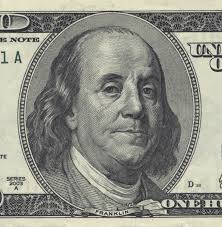Benjamin franklin
Main Idea
Benjamin Franklin is widely known as one of the Founding Fathers of the United States. However, he was also an accomplished inventor, scientist, writer, and politician. Although an expert in many fields, Franklin contributed greatly to the field of physics with his inventions and discoveries revolving around electricity. He is undoubtedly one of the most influential people in early American history.
Connectedness
Franklin was considered a polymath. An incredibly wide range of studies can be traced back to his influence at some point in his life. He was a pioneer, an entrepreneur, and a leader in many ways, including the founding of the United States. Nearly every American college student can benefit from reading about Franklin's interesting life, as it most likely relates to their field of study.
History
Personal Life
Benjamin Franklin was born in Boston, Massachusetts, on January 17, 1706, and died on April 17, 1890 in Philadelphia, Pennsylvania at the age of 84. He grew up with 16 siblings, but at the young age of 17, left Boston for Philadelphia, where he would spend the majority of his life. Franklin married early in life to Deborah Read. They had two children together, and helped raise Franklin's illegitimate son, William.
Inventions and Discoveries
Although credited with countless inventions, Franklin never got a patent for any of them. As he explains in his autobiography, "we enjoy great advantages from the inventions of others, we should be glad of an opportunity to serve others by any invention of ours; and this we should do freely and generously." Some of the inventions he is credited for include the lightning rod, bifocal glasses, and the Franklin stove. It is also important to note that Franklin was also interested in demography, and is credited for many social innovations as well, such as "paying forward."
Franklin was the first person to attach positive and negative labels to electricity, and he was the first person to discover the conservation of charge principle. One of the most famous stories about Franklin is about his experiment where he set out to prove that lightning was indeed electricity. As the story goes, Franklin flew a kite in the middle of a lighting storm, and observed how the metal in the kite attracted lightning from the clouds. Franklin never actually published this experiment, but as rumors about the experiment traveled, many scientists attempted to observe the same conditions around the world. It was this experiment that led to Franklin's invention of the lightning rod, and soon buildings in every major city had attached a lightning rod to the roof for safety.
See also
For more on Franklin, the following resources are excellent:
Further reading
Benjamin Franklin: An American Life Paperback – June 1, 2004 by Walter Isaacson
The First American: The Life and Times of Benjamin Franklin Paperback – March 12, 2002 by H.W. Brands
External links
https://en.wikipedia.org/wiki/Benjamin_Franklin
http://www.ushistory.org/franklin/info/
http://www.americaslibrary.gov/aa/franklinb/aa_franklinb_electric_1.html
On the conservation of charge:
https://en.wikipedia.org/wiki/Charge_conservation
References
Page created by Ryan O'Malley November 25, 2015

